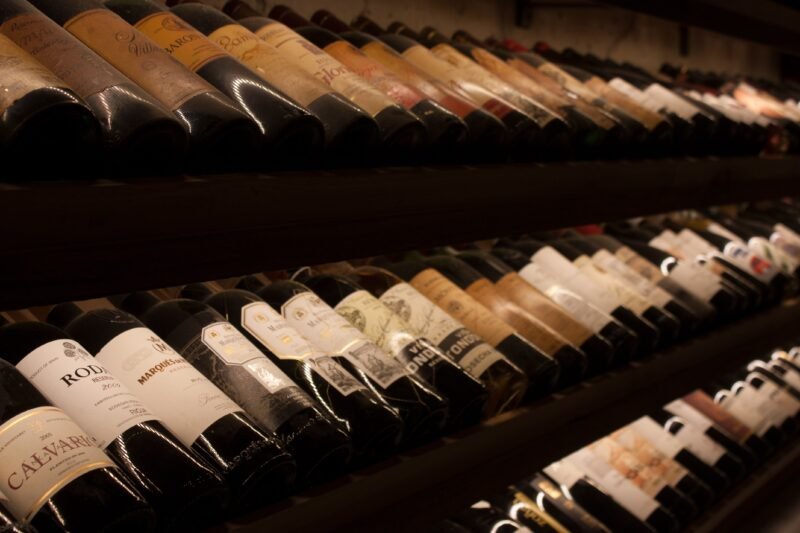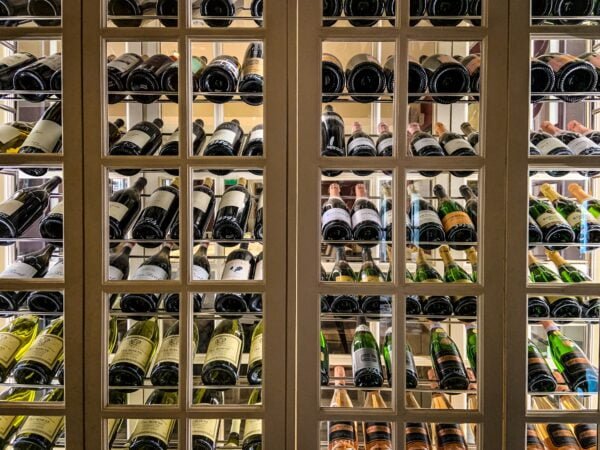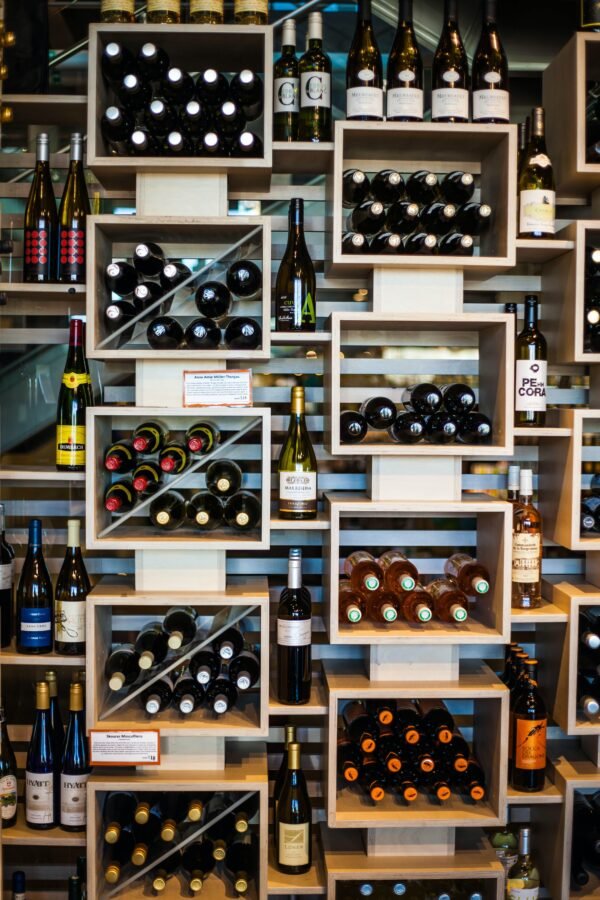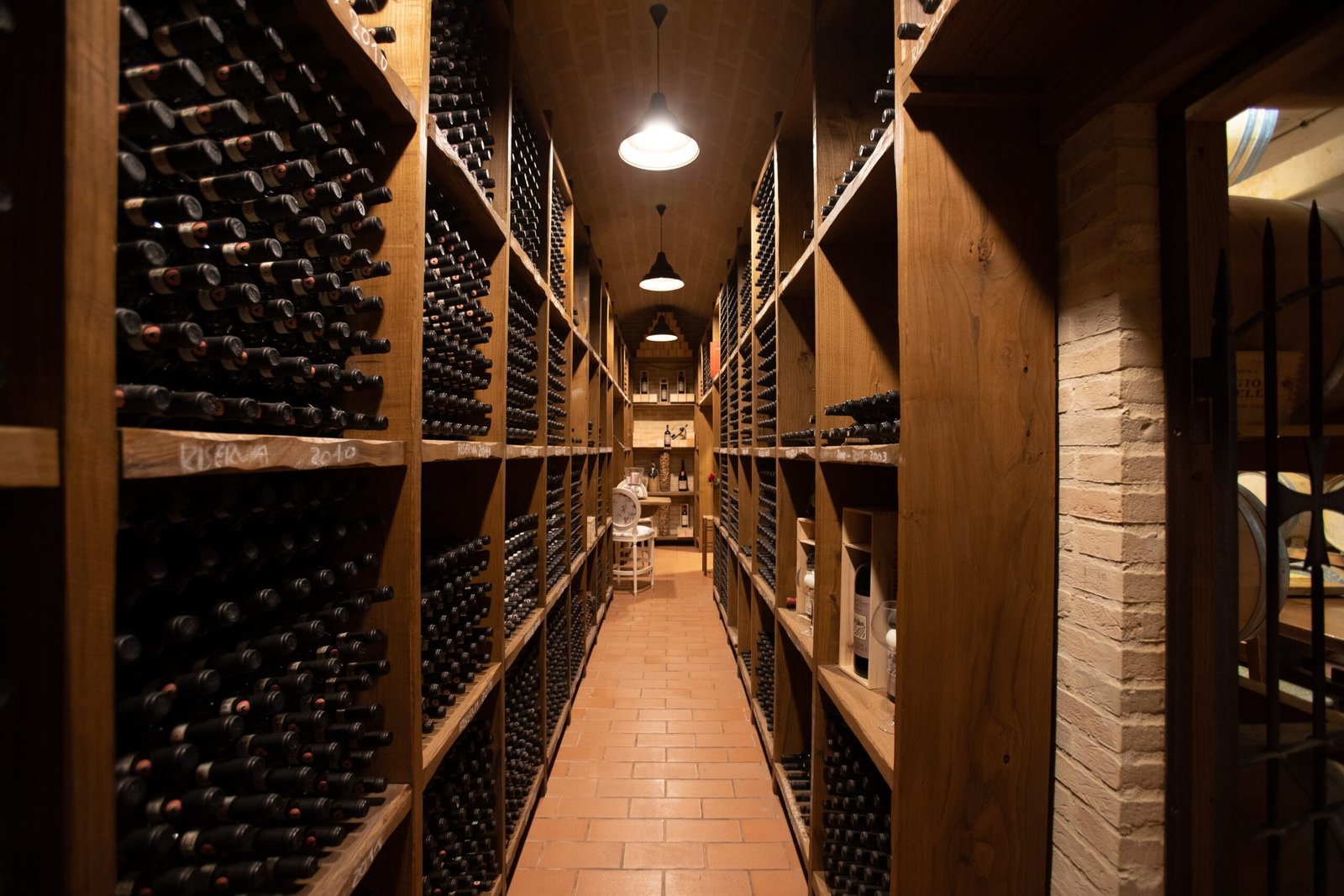Just starting your wine collection but don’t know how to start? Or looking for better ways to organise your current and future wine collection?
You’ve come to the right place.
Without a clear system in place, your wine cellar organisation will either be confusing or inefficient. Not to mention, we’ll also need a method to anticipate your collection’s growth so you won’t need to reorganise the wine cellar again and again.
In this guide to organising your wine cellar, we’ll learn how to effectively and efficiently organise your wine cellar and your wine collection. While there’s no one-size-fits-all way to stocking your wine cellar, here we will share some actionable tips and tricks you may find useful, and by the end of this guide, you’d have learned about:
- What type of wine should we store in a wine cellar
- Factors that may affect wine quality when stored In a cellar
- Best practices and common mistakes of wine cellar organisation
- Different wine collection organisation methods and the pros and cons of each
And more.
Without further ado, let us begin this guide right away.
Ageing Wine in Your Cellar: Key Principles

Contrary to popular belief, not all wine ages well, and unfortunately, wines (even expensive ones) can spoil.
There are several conditions that can cause wines to go bad:
- Air exposure can cause oxidation and can occur when there’s a leak in the bottle or due to a condition called bad cork. Bad cork is when a bottle’s cork dries out and becomes brittle. Re-corking the wine is not a viable solution since even very brief exposure to air will trap the air in the bottle and potentially spoil the wine.
- Bottle shock, also called bottle sickness, is a temporary condition in which the wine’s flavour and aromas become muted or disjointed. As the name suggests, bottle shock happens when the wine absorbs too much oxygen in too little time. While bottle shock can be ‘fixed,’ it requires certain knowledge/skills, and it can take up to two weeks before the wine regains its flavor.
- Too-warm storage conditions can also spoil the wine, as well as uncontrolled humidity.
- Even when stored in perfect conditions, every wine has a specific ageing window, and letting it age past this window will almost always result in spoiling.
With that being said, when building your custom wine cellar (or having someone build it for you,) consider the following:
- Your wine cellar is a long-term investment, so plan everything carefully to make sure it’s future-proof. Make sure you can maximise your space for the future and plan every detail.
- You’ll need to invest adequately in temperature and humidity control. Start by investing in an accurate and reliable cooling unit that can maintain an ideal temperature between 55º and 59º F, with a humidity between 55 and 75%.
- To maintain this temperature and humidity, you’ll need to make sure the cellar has good insulation in all areas. To maintain consistent humidity, you’ll need to invest in a vapour barrier, as well as weather stripping on the door to prevent outside air from getting into the cellar itself.
Can We Store Any Kind of Wine in a Wine Cellar?

The short answer is, yes, you can definitely store any kind of wine in your wine cellar.
However, if you really want to maximise the usefulness of your wine cellar and make the most of the available space, it’s crucial to understand that not all types of wine will age well in the wine cellar. A sheer number of wines available in the market today (including premium ones) are produced and designed for immediate/early consumption, so they won’t age well in a cellar,
An ideal wine that will age well in a cellar should have at least two of the following characteristics:
- Alcohol levels: while there are rare exceptions, the lower the alcohol level, the better it will age and the longer it will last (for non-fortified wines). In general, look for wines with ABV below 13.5% (non-fortified) or 17-20% ABV (fortified)
- Acidity: wines with higher acidity tend to last longer and age better. Wines naturally lose acidity over time, so those with higher acidity will have an advantage.
- Tannin: for red wines, wines with higher tannin levels tend to age better. However, it’s also crucial to make sure the wine is already well-balanced despite the high tannin levels, or the wine won’t age well. For white wines, however, tannin levels don’t really affect the ageing process.
- Sugar: sweet wines tend to last longer and age better. Sugar acts as a preservative for the wine, and this is why many sweet wines like Port or Sherry are among the longest-lived wines.
Based on these principles, we can identify the best types of red wines and white wines to store in your cellar.
Best-aged red wines to store
Below are the best types of red wines to age, along with their optimal ageing window:
- Port (10-50 years ageing window)
- Cabernet Sauvignon (5-25 years)
- Merlot (3-15 years)
- Sangiovese (10-30 years)
- Monastrell (7-20 years)
- Cabernet Franc (5-20 years)
- Nebbiolo (15-40 years)
- Malbec (5-10 years)
- Syrah (2-12 years)
While there are other red wines that can age well, especially full-bodied ones with robust structures, these nine are considered the best to age in a wine cellar. Not to mention, these nine types tend to have great resale value, making them a great place to start if you want to start reselling your collections.
Best-aged white wines to store
As discussed, white wines aren’t typically the favourite for ageing in cellars, and most of them are made to be drunk young.
white wines with firmer structures and higher acidity might be worth considering, especially these six types:
- Chenin Blanc (1-7 years ageing window)
- Chardonnay (2-10 years); especially Oaked Chardonnay
- Riesling (0-5 years)
- Viognier (2-7 years)
- White Bordeaux (3-5 years)
- Semillon (1-5 years)
Keep in mind, however, that despite the ageing window that can reach up to 50 years for really special bottles, an ageing time of no more than three years is most appropriate for most wines.
Different Ways to Organise Your Wine Collection

Your wine cellar should be personal, and there’s no one-size-fits-all method to organise your collection.
Yet, regardless of the approach you choose, the method should help you achieve two primary objectives:
- Clarity: it’s easy to find any bottle you’d like to find at any time. There’s nothing more annoying than a wine cellar that confuses its own owner.
- Efficiency: that is, the organisation method should help you maximise the cellar’s storage space
Different collections may require different organisation methods to effectively achieve these two objectives, and not to mention; you should take your own preferences into account.
With that being said, here are some popular methods to organise your wine cellar
By wine type (colour)
One of the easiest ways to organise your wines is by type: red wines, white wines, sparkling wines, and so on.
This method is especially useful for smaller cellars and/or collectors with relatively small collections (i.e., when they are just starting out.) In such cases, a more detailed/advanced organisation system might not be necessary, so you can use this simple system.
By price
Another simple but effective wine classification system is to organise them by price. Especially If you are just starting out and if you don’t expect your collection to grow bigger than 200 bottles or so, organising by price can be effective.
In practice, wines come with a wide variety of qualities (and prices.) Wines that are allowed to age are usually more expensive, while the ones that will be consumed daily are usually lower in price. Therefore, organising your cellar by price can make it easier to distinguish which bottle should be consumed first and which should be left to age (and for how long.)
By varietal
For medium-sized to larger-sized wine collections (i.e., 200 bottles and above,) organising by varietal is one of the favourite methods used by a lot of collectors.
As discussed above, the most basic form of wine organisation is to separate red and white wines in different areas (sometimes with different treatments/temperatures/humidity for each area.) A step further is to categorise the wine bottles according to the dominant grape variety in the blend.)
For example, all types of Chardonnay can be stored in a similar area, while the Riesling bottles are placed in another area. This method allows owners to easily find specific wine varietals easily, and you can also combine this method with others (i.e., sorting each varietal by price.)
By region
Once your wine collection grows bigger, and you’ve amassed bottles from different regions around the world, you have the option to classify your wine collection by country of origin or by region.
For example, you can designate the top three rows of your wine cooler for your Italian wines; then, you can designate each row by a specific Italian region.
For more complex organisation methods such as this one, you might want to create an Excel spreadsheet or take advantage of various wine inventory apps available so you can keep track of where you keep each bottle.
By brand/producer
Many collectors chose to be a member of winery clubs and purchase their new releases each vintage, growing their collections in bulk in the process.
While this method of collecting can be profitable since you can sell these collections later also in bulk (i.e., in sets of three,) you’ll need to be more meticulous in organising your collection: first by region or varietal, then by brand/producer.
If you want to use this method, you may want to invest in multiple shelves, each shelf for each region, and then you can further break down this shelf into varieties and producers.
Wrapping Up
Again, while there is no right or wrong way to stock and organise your wine collection, above, we’ve shared tips and tricks you can use to enhance your cellar both in terms of convenience and aesthetics.
It’s best to plan your cellar organisation as early as possible when you start working with a consultant to design and build your cellar, so you can start with a functional cellar design that allows you to stock your cellar based on how you plan to enjoy your collection.
Looking to build a bespoke wine cellar, racks, or wine rooms for your collection? Contact Leessa or make an appointment to visit our London showroom right away.



